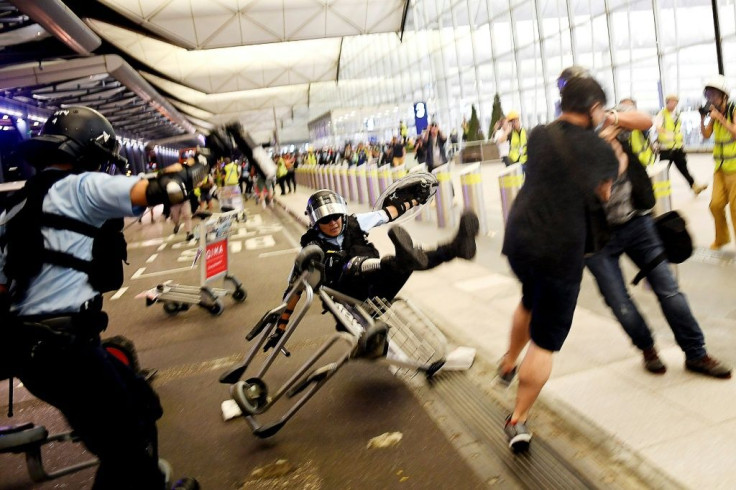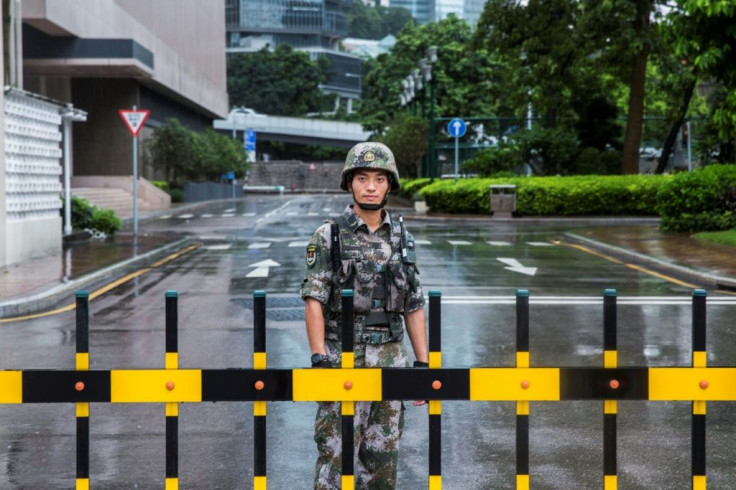China Sends Fresh Troops Into Hong Kong, PLA Vows To Protect 'National Sovereignty'

China has moved a fresh batch of soldiers into Hong Kong on Thursday and sent with them a statement from the People’s Liberation Army (PLA) that the Garrison will “resolutely follow” any orders that the central government might give.
The PLA’s Hong Kong Garrison is not new to Hong Kong. The troops have had a visible presence in the former British Colony since 1997 when the city was ceded to China with a “One country, two systems” form of government that allows its citizens to enjoy some legal and economic freedoms that the mainland Chinese people don’t have.
This taste of democracy has proved to be irksome to Beijing when pro-democracy sentiments erupt into full out protests as in the “Umbrella Movement” of 2014 and the current unrest that some are calling the “Hard Hat Revolution." The hard hat is becoming a symbol donned by demonstrators not only to show support for the cause but also to protect against police batons and objects thrown by pro-Chinese gangs that have appeared at some of the protests.
In a report by CNBC, the PLA’s moves were described as routine and the translated statement by PLA’s overseas public relations arm said, “The Hong Kong Garrison will resolutely follow the instructions of the Central Government and the Central Military Commission, resolutely implement the ‘one country, two systems’ principle.”
The statement translated by CNBC continued, “[The Garrison] will resolutely safeguard national sovereignty, security, and develop interests, effectively perform duties to defend Hong Kong, and make important new contributions to safeguarding Hong Kong’s prosperity and stability.”

The state-run Xinhua news agency had earlier reported that the Hong Kong Garrison had “conducted the 22nd rotation of its members in the wee hours of Thursday." Xinhua also published photos of armed personnel carriers and trucks carrying troops at the border, as well as a small naval vessel arriving in Hong Kong.
The concern all along has been if China will actually deploy the garrison to put an end to the unrest, something the Hong Kong Police Force and the Hong Kong government have been unable to do. Or, will they remain on the sideline hoping the protests will end on their own. If anything, the Hart Hat Revolution seems to be growing in its resolve as more people join the protests.
On Sunday, the Hong Kong Police brought out water cannon trucks for the first time to use against the protesters while Chinese troops and tanks were observed assembling earlier this month in Shenzhen, a Chinese city bordering Hong Kong. All of this indicates that Beijing is growing more concerned about the Hong Kong leadership’s failure to resolve what is becoming a huge political and economic headache.
© Copyright IBTimes 2025. All rights reserved.




















